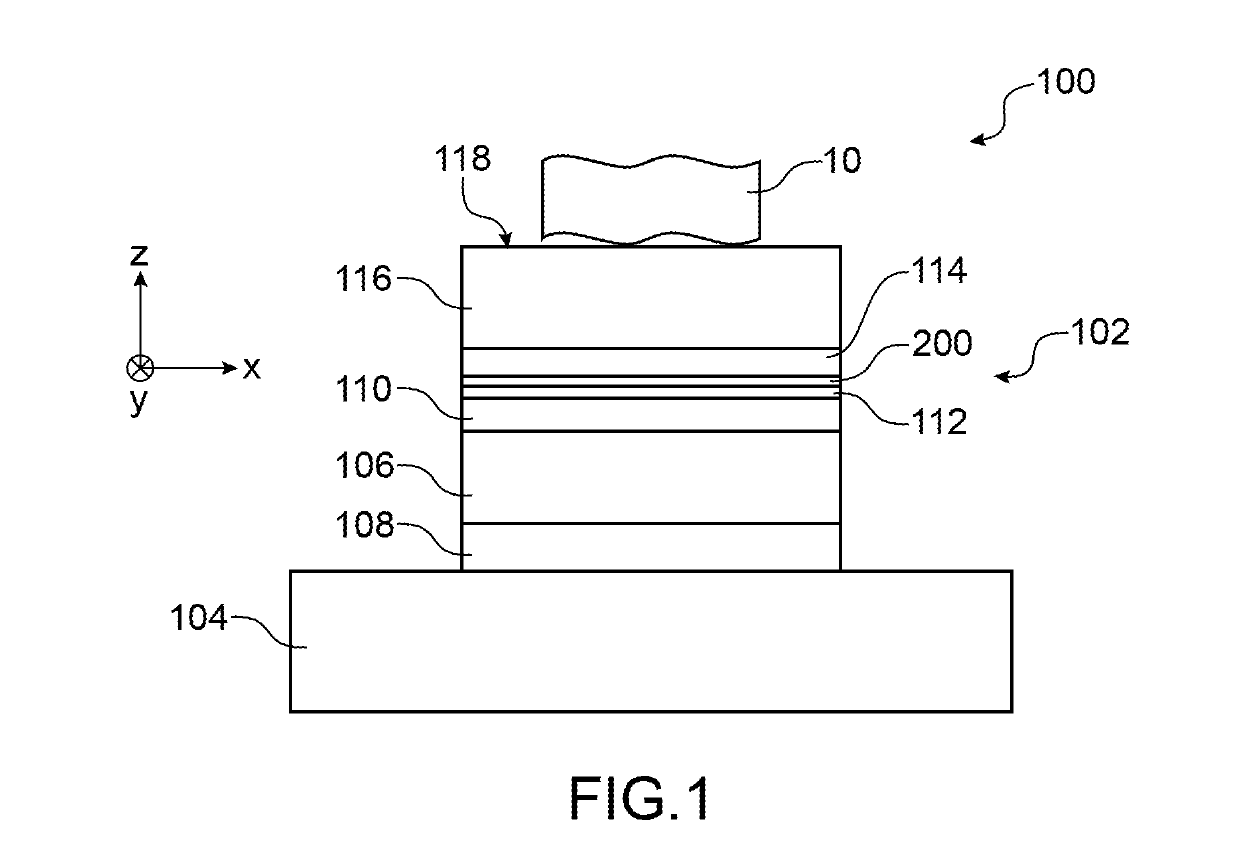Thermal pattern sensor with pyroelectric capacitance and hard protective layer
a technology of pyroelectric capacitance and thermoelectric pattern, applied in the field of thermoelectric pattern sensors, can solve the problems of no longer being able to obtain satisfactory contrast, zero signal obtained, and the inability of sensors to carry out measurements
- Summary
- Abstract
- Description
- Claims
- Application Information
AI Technical Summary
Benefits of technology
Problems solved by technology
Method used
Image
Examples
Embodiment Construction
[0014]There thus exists a need to propose a thermal pattern sensor in which the risks of degradation of the sensor due to the conductive portions forming the heating elements and comprising depositions of electrically conductive particles are reduced or eliminated.
[0015]To do so, a thermal pattern sensor comprising several pixels arranged on a substrate is proposed, each pixel including at least:[0016]a pyroelectric capacitance formed by at least one portion of pyroelectric material arranged between at least one lower electrode and at least one upper electrode, with the lower electrode arranged between the substrate and the portion of pyroelectric material,[0017]a dielectric layer such that the upper electrode is arranged between the portion of pyroelectric material and the dielectric layer,[0018]a heating element including at least one deposition of electrically conductive particles and such that the dielectric layer is arranged between the upper electrode and the heating element,[...
PUM
 Login to View More
Login to View More Abstract
Description
Claims
Application Information
 Login to View More
Login to View More - R&D
- Intellectual Property
- Life Sciences
- Materials
- Tech Scout
- Unparalleled Data Quality
- Higher Quality Content
- 60% Fewer Hallucinations
Browse by: Latest US Patents, China's latest patents, Technical Efficacy Thesaurus, Application Domain, Technology Topic, Popular Technical Reports.
© 2025 PatSnap. All rights reserved.Legal|Privacy policy|Modern Slavery Act Transparency Statement|Sitemap|About US| Contact US: help@patsnap.com

